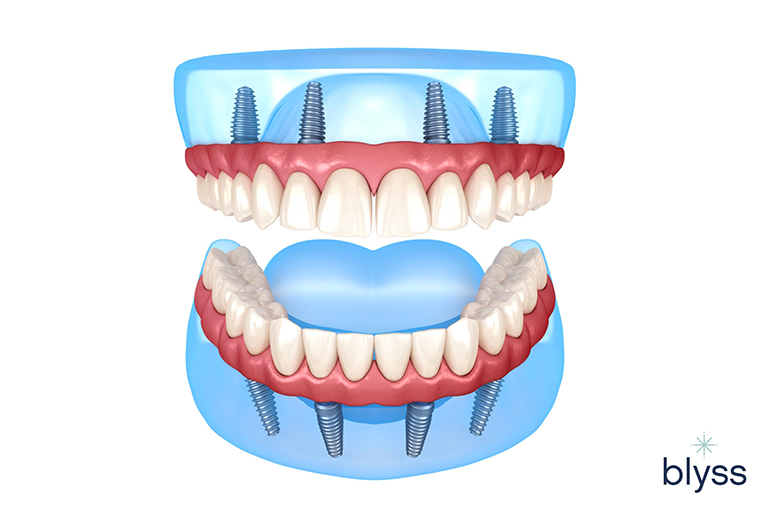Some Of Dental Sense
Table of ContentsThe 10-Minute Rule for Dental SenseNot known Factual Statements About Dental Sense Not known Factual Statements About Dental Sense Everything about Dental Sense
are clinical devices operatively implanted into the jaw to restore an individual's capability to chew or their appearance. They supply support for fabricated (fake) teeth, such as crowns, bridges, or dentures. When a tooth is shed as a result of injury or condition, a person can experience problems such as fast bone loss, faulty speech, or modifications to chewing patterns that result in pain.Oral implant systems include a dental implant body and oral implant abutment and might also include an abutment addiction screw. Dental implants. The oral implant body is operatively placed in the jawbone instead of the tooth's root. The dental implant abutment is normally connected to the dental implant body by the abutment addiction screw and prolongs with gum tissues into the mouth to support the connected artificial teeth
(https://experiment.com/users/dentalsense1)Framework of The Oral Implant System choosing dental implants, talk to your dental company regarding the potential advantages and threats, and whether you are a candidate for the procedure. Things to take into consideration: Your overall health is a crucial consider determining whether you are a good candidate for oral implants, how much time it will take to recover, and for how long the dental implant might remain in area.
Cigarette smoking might influence the recovery procedure and lower the long-term success of the implant. The recovery process for the dental implant body may take numerous months or longer, during which time you typically have a temporary abutment in area of the tooth. the dental implant treatment: Very carefully follow the dental health guidelines provided to you by your dental copyright.
Dental Sense Fundamentals Explained
Implant failure can cause the demand for another procedure to deal with or change the dental implant system. Brings back the ability to eat Recovers cosmetic appearance Aids keep the jawbone from shrinking as a result of bone loss Protects the wellness of the surrounding bone and gum tissues Aids keep surrounding (nearby) teeth steady Boosts top quality of life Damages to bordering all-natural teeth throughout dental implant positioning Injury to the surrounding tissues throughout surgical procedure, such as sinus perforation Injury during surgical treatment (for instance, crack of surrounding jawbone) Poor function, such as really feeling like the teeth do not attack together usually An experience that the tooth hangs or twisting in position arising from an abutment screw loosening up Implant body failing (looseness of the dental implant body) because of systemic infection, which might be most likely in individuals with unrestrained diabetics issues as a result of local infection in bone and gum tissues supporting the implant body because of delayed recovery, which might be more most likely in people who smoke Difficulty cleaning up the gum tissues around the dental implant, leading to inadequate dental health Unattended gum illness Post-surgical tingling due to nerve impingement or damage Constantly inform health care service providers and imaging specialists that you have oral implants prior to any kind of magnetic resonance imaging (MRI) or x-ray treatments.
FDA is not knowledgeable about any type of damaging occasions reported for MRI or x-ray procedures with dental implants. Dental implants systems are commonly made from materials that comply with international agreement criteria of the International Company for Standardization (ISO) or ASTM International. These criteria have details of what makes a risk-free material.

A dental implant is a framework that changes a missing tooth. With screw-like devices, the cosmetic surgeon inserts an implant right into the jawbone, and it acts as a support for a man-made tooth, called a crown. A gadget called a joint links the man-made tooth to the dental implant. The crown is customized to fit the individual's mouth and match the shade of their teeth.
Fascination About Dental Sense
Some individuals are not eligible for dental implant surgical procedure. It is for oral cosmetic surgeons to run on individuals with: intense illnessuncontrollable metabolic diseasebone or soft tissue illness or infectionIf these issues are settled, a person can have the surgical treatment. In, dental doctors avoid running on individuals with: If people with any one of the above go through oral implant surgical procedure, there is a Visit Your URL greater danger of the dental implant stopping working.

Dental implant surgical treatment is a personalized procedure. It's not the same for every person. But the complying with provides a general summary of what you can anticipate your dental professional, dental cosmetic surgeon, periodontist or prosthodontist to do: Put the implant operatively. Offer you time to recover. Affix the article and final crown, bridge or denture.
Next, your specialist will meticulously put the oral implant right into your jaw. Your doctor will rearrange your periodontals and close the incision with stitches. If your dental implant is near the front of your mouth, your dental practitioner will certainly make a temporary tooth for you to use until you recover. That means, you will not have a space in your smile while you recuperate.
How Dental Sense can Save You Time, Stress, and Money.
During the recovery stage, your jawbone needs to fuse to the dental implant. This procedure can take anywhere from 3 to nine months.
When your dental implant heals, your dentist can attach the abutment (small connector article) and your final remediation (crown, bridge or denture). This usually takes about one hour to complete and may call for a second small surgical treatment. You shouldn't really feel any type of pain during your dental implant treatment since your provider will use medicine to numb your gums.